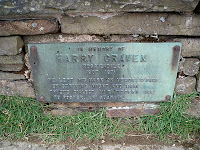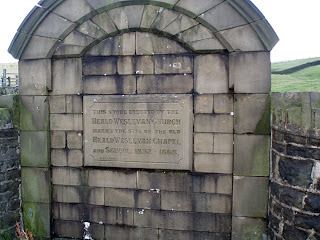| Royal Academy of Music |
I had the opportunity to visit the Royal Academy of Music at the end of 2010. It was a thoroughly enjoyable visit. The impression that the Academy gave out was one of the utmost excellence and the quality of musicianship was of the highest order. To obtain a place at the Academy and Graduate places you amongst the finest. However I did not expect to find the memorials in the entrance hall. I expect many students have seen and acknowledged their presence, few will know the names. I feel that members of the general public will not know of their existence. They are however reproduced below. They are copy-write free, but I would love an acknowledgement if you download them. If you use the on a website a link would be superb. I have a higher resolution image should you need it. They will probably not email, being too big. There were two faintly bemused security/janitors as I photographed the memorials.
This is the inscription on the tall green Memorial.
" TO THE MEMORY OF
THE MEMBERS OF THE
R.A.M. WHO FELL IN THE
GREAT WAR 1914-1919
WILLIAM H. BAMBRIDGE
Captain P.S. Batt. R. Fusiliers
RALPH BOTTING
Lieut Inns of Court O.T.C.
EDWARD HENRY COLE
Corp. Royal Bucks Hussars
LIONEL DOWN
Sapper R.E. Signals
GODFREY GARDNER
Lieutenant Suffolk Regiment
LEONARD HART
L/Cpl. 6 Royal West Kent Regiment
HUBERT KIVER
Lieut. East Surrey Regiment
ALBERT MAIDEN
Private Artists Rifles
WILLIAM B. MANSON
Private London Scottish
RICHARD SAMPSON
Lieut. Public Schools Batt.
HENRY SANDERS
Lieut. Queen Victoria's Rifles
HARPER SEED
Lieut, 17 Sherwood Foresters
FRANCIS J. THORNS
Lieut. Royal Bucks Regiment
ARTHUR B. WILKINSON
Lieut. 2/5 Royal Sussex Regt."
Along the bottom are the names
"F.S.APPLEBY
Private 5 Essex Regiment
WILLIAM J. PERRY
Cpl. 21 Batt. Middlesex Regt.
J. L.SUTTON
Driver Royal Field Artillery"
| Plaque commemorating those who fell in WW2 |
 |
| Fiftieth Anniversary |
Simmon Latutin has a separate plaque too. There is a biography of Simmon here. The other plaque mentions the refurbishment that was done in 1995.





